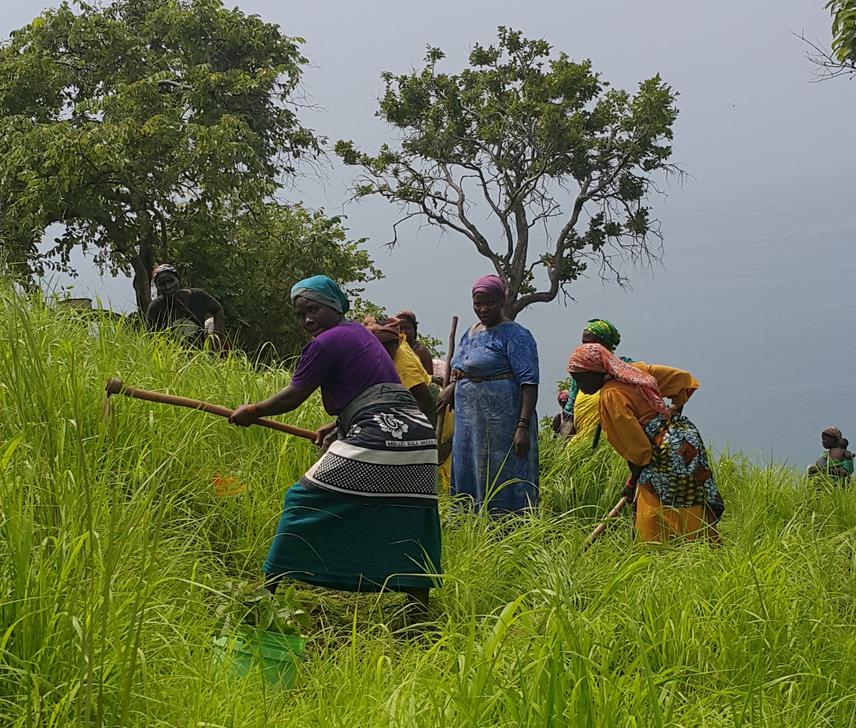Elihuruma Wilson
Other projects
28 Feb 2014
Phytochemical Investigations and Antimicrobial Activities of Extracts and Secondary Metabolites from Sterculia quinqueloba (Garcke) K. Schum
6 Jul 2015
Chimpanzee, Man and Forest Integration for Enhancement of Greater Gombe Ecosystem
Unlike other primates, chimpanzees are limited to high quality food. They spend long time searching for ripe fruit even if they are rare. They also require large home range and Gombe National Park, Tanzania is small to support viable population. Greater Gombe Ecosystem was formulated by adopting the idea of landscape-scale conservation. In which important chimpanzee ranging areas were identified and included in the village land forest reserves, during land-use planning process that was facilitated by the Jane-Goodall Institute. Those areas, many of which were drastically destroyed, were allowed to regenerate naturally. Although, natural regeneration is a natural process, the succession is unpredictable and may affect landscape suitability either positively or negatively with respect to chimpanzees. I now seek to measure the success of this approach, in restoring habitat for chimpanzees, by measuring regeneration diversity and local community attitude toward village land forest reserves conservation approach.

Tree planting campaign at Mwamgongo village
Gombe National Park, located in the western Tanzania, historically supported a large number of large vertebrate species; however, despite nearly half century of protection, large vertebrates like buffalo, lion, waterbuck and hippopotamus have locally gone extinct. The remaining large vertebrates like chimpanzees are equally not safe. Their numbers have gradually declined over the past few decades and their habitat outside the park decreased drastically. In response to concerns about the threats to chimpanzee survival at Gombe, Jane-GoodalI Institute (JGI) and Tanzania National Parks (TANAPA) adopted a landscape-scale approach to cover the forest and woodland fragments outside the park within the Greater Gombe Ecosystem (GGE). Since 2005, the JGI, TANAPA and local government authorities have worked with local communities to develop an interconnected network of village land forest reserves. These reserves were allowed to regenerate naturally.
The success of these efforts is evident through satellite images. However, although natural regeneration is a natural process, the succession/regeneration is unpredictable and may affect landscape suitability either positively or negatively with respect to chimpanzees. Unlike other primates, chimpanzees are limited to high quality food. They spend long time searching for ripe fruit even if they are rare.
Strategic reforestation of historical chimpanzee habitat will be rated as successful if among others, it produces habitat that provides chimpanzees with food, shelter and cover that could be used when traveling between forest patches. Assessment of this effort would illustrate whether the promotion of natural forest regeneration has sufficed to produce quality habitat for chimpanzee, or if active restoration measures — such as uprooting unwanted plants or planting the desired species — will be needed.
Moreover, the dependency of human beings on biodiversity for their survival goes without question. It is therefore presumed that when we put local communities at the heart of conservation, we improve the lives of people, animals and the environment. The ecosystem-based land-use plan approach, facilitated by JGI and Tanzania government authorities implemented in the GGE provide an opportunity to explore the impact of this approach on local community conservation knowledge and attitude.
It is through our uniqueness as humans that we can understand our effect of our own activities on chimpanzee habitats. Because we are the major cause of chimpanzee decline, we must provide solutions. This project will advance knowledge on the impact of ecosystem-based land use plan approach, designed to facilitate environmental restoration, protect and conserve wildlife habitats and promote sustainable utilization.